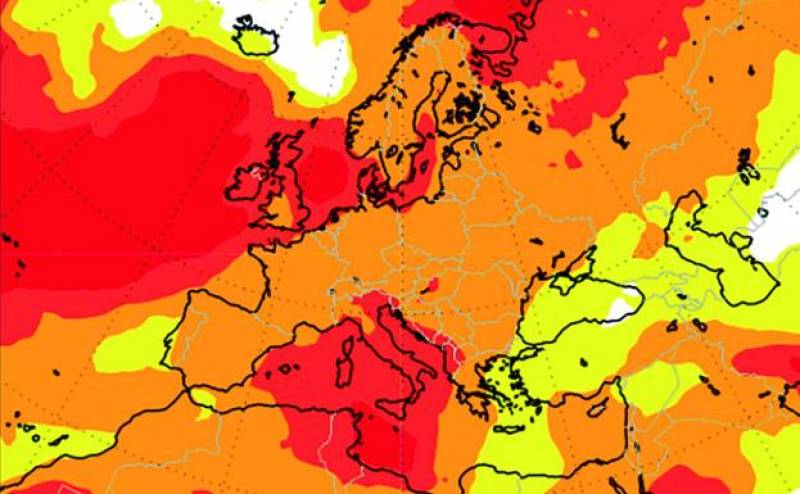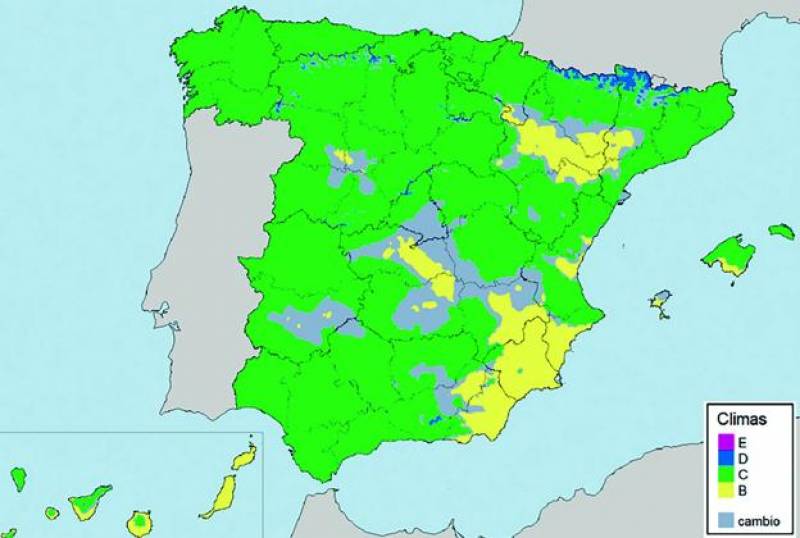Date Published: 20/09/2022
ARCHIVED - What will the weather be like in Murcia this autumn?
The Mediterranean coast is becoming more arid due to climate change, so we can expect a hotter and drier autumn than usual this year

Autumn begins in Spain on Friday September 23, and meteorologists are predicting that the fall season will be warmer than usual this year, especially on the Mediterranean coast and the Balearic Islands.
The State Meteorological Agency (Aemet) has already confirmed that this has been the hottest summer in Spain since records began in 1961, and therefore of the 21st century. Now, in the coming months, the western Mediterranean – including the Region of Murcia on the Costa Cálida – could be among the top 20% warmest months ever recorded, they say.
Seasonal forecasts indicate that Murcia has up to a 70% chance of seeing its temperature increase over the next three months with respect to the average in autumn in previous years.
In other words, it would be in the upper third of the value for warm temperatures, while for the rest of mainland Spain, the probability would be between 50% and 60%, according to the multi-model system of the Copernicus Climate Change Service (below).

The northwest of the Region of Murcia is among the areas where the arid climate has increased over the last 50 years, as well as other parts of Spain, including Andalusia, Castilla-La Mancha, Extremadura and Aragón. Both temperature and aridity phenomena were shown yesterday in the report presented by the Aemet.
The general forecast of a drier autumn is not only a Spanish phenomenon. Higher than usual temperatures will be the dominant trend across Europe.
Spain’s third vice-president and minister for Ecological Transition, Teresa Ribera, who attended the presentation of the seasonal results of the Aemet, said, “The response to the climate emergency is a serious and urgent matter.”
The forecasts have also highlighted changes in the Köppen-Geiger climate classification (below), which show in yellow areas where the climate was already arid in the mid-20th century and in grey the areas that have become arid since then.

It is an established scientific fact that greenhouse gas emissions are causing an increase in global temperatures, and in Spain, this warming is estimated at around +1.4ºC since the 1950s.
The clear increase in temperatures and the slight decrease in rainfall have resulted in an extension of arid climates in Spain. It is estimated that, since the middle of the 20th century, areas with arid climates have doubled in Spain, advancing at a rate of more than 1,500 square kilometres per year.
This means that, every five years, an area equivalent to that of the province of Malaga becomes arid, which is linked to a lower availability of water for plants as a result of greater evaporation.
In Murcia, for example, the water reservoirs of the Segura river basin are at 34.3% of their capacity, which means they are currently holding just 392 cubic hectometres of their total capacity of 1,140 cubic hectometres. At this same time last year, the basin had 443 cubic hectometres available – 51 more than this year.
>>> Get more weather insights about Murcia here or join our Facebook groups: Murcia Weather Watch and Spain Weather Watch <<<
Image 1: Archive
Images 2 & 3: Aemet
Loading
Sign up for the Spanish News Today Editors Roundup Weekly Bulletin and get an email with all the week’s news straight to your inbox
Special offer: Subscribe now for 25% off (36.95 euros for 48 Bulletins)
OR
you can sign up to our FREE weekly roundup!
Read some of our recent bulletins:
Discount Special Offer subscription:
36.95€ for 48 Editor’s Weekly News Roundup bulletins!
Please CLICK THE BUTTON to subscribe.
(List price 3 months 12 Bulletins)
Read more stories from around Spain:
Contact Spanish News Today: Editorial 966 260 896 /
Office 968 018 268
































